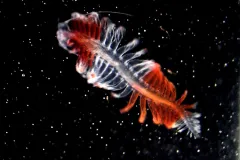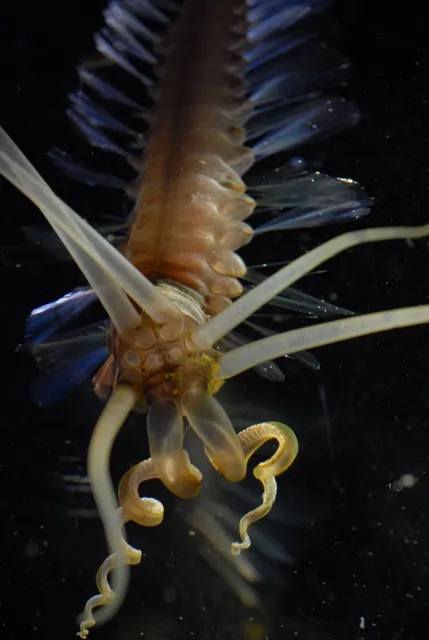Five Questions with Brigitte Ebbe, Polychaete Pundit

 Now that the Census of Marine Life is over, we’re checking in with some of the researchers to hear about their favorite expedition, what they learned, and how the Census and its findings continue to influence their work.
Now that the Census of Marine Life is over, we’re checking in with some of the researchers to hear about their favorite expedition, what they learned, and how the Census and its findings continue to influence their work.
Brigitte Ebbe is a biologist at the Alfred Wegener Institute for Polar and Marine Research in Germany. During the Census, she worked with the Census of the Diversity of Abyssal Marine Life (CeDAMar) Project to study the abyssal plain—the flat seafloor bottom that covers 50% of the Earth’s surface and is generally considered pretty uninteresting biologically. But that’s not what Brigitte has found.
What was the most interesting thing you learned during the Census?
We had two deep-sea expeditions to the Antarctic Southern Ocean. The cool thing about it was that these were spots that nobody had ever been to before. We were the first to put something manmade on the seafloor there, and 90% of the animals had never been seen by human eyes. There was such a richness of life: all kinds of different worms and crustaceans and mollusks, things like that. You get a different point of view in what we call “extreme environments:” for us it's really inhospitable, but for the animals that live there, it's normal. When we take them back to the ship through 4000 meters of water, they die of heat and low pressure. That’s something that really changed me during the years of Census research.
What do you study?
The overarching theme of my research is biodiversity, and my special animal group is the polychaetes (bristle worms). I am interested in their distribution on and within the seafloor. This work is important because polychaetes represent about half of what lives in any benthic community, at least in the size class I work with, which is macrofauna: animals 0.5 mm (around 5x the thickness of a piece of paper) to a few centimeters long. If we know how many species are in any given habitat, such as deep-sea basins, and their distributional patterns, then we can begin to understand what regulates these patterns, how the ecosystem seafloor works, and how we can exploit and/or protect it in the best possible way.
What have you learned and what do you hope to learn?
I think the most important thing I have learned during the Census is that there is an astounding diversity and richness of life wherever one looks. Even after ten years of exceptional cooperative efforts, we did little more than scratch the surface. This is especially true for the large abyssal plains that, just because of sheer size, will probably remain less explored than the rest of the oceans. We now know some things about the many forms of life on the deep ocean floor, we made progress in explaining the evolutionary history of some organisms, but we still know next to nothing about biological traits of deep-sea organisms. What do they feed on, how do they reproduce, how does the flow of energy work in deep-sea sediments and who are the main players? Is there competition for food or space? We do not know.
Why is describing new species so important?
The main reason is so that we know what else is living here on Earth. The other is that, in order to understand how the ecosystem works, we really need to know how many species are in it and what they are doing, what their biology is. When you work in ecosystems, you begin to discover that there are redundancies—species performing similar roles in the ecosystem—and you wonder at first, “What's that good for?” The value is that it makes the system more robust against any kind of change, such as climate change. And to see these things, you have to know what the species are.
What are some of the challenges you face now that it’s over?
Generally, it is difficult to keep the momentum of the Census going without its framework and infrastructure, not to mention the visionary leadership. For me as a systematist and taxonomist, the one challenge that was already there before the Census is the absence of positions at universities and research institutions. The Census got lots of public attention, but it didn't translate into new positions. The problem with all these projects is that it's relatively easy to get funding to go out on cruises, but it's very hard to get money for personnel to identify the organisms we collect. It takes a lot of time so it's expensive. We are doing this in our free time after work, so to speak.


